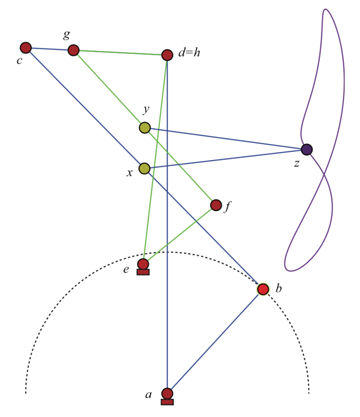In the article "On Being Thurstonized" by Benson Farb (located here), a particular result of Thurston is mentioned.
Namely, suppose a "tinker toy" $T$ is a contraption consisting of a multitude of rods. They can either be bolted to a table, or attached to each other along hinges. The configuration space $C(T)$ consists of all possible configurations of $T$. For example, if $T$ is a single segment, then $C(T)$ is a circle.
The claim is then that any compact, smooth manifold can be obtained as a component of some $C(T)$.
I've thought about it a bit (though perhaps not enough), and this theorem escapes me completely. Are there any notes or explanations out there that describe the proof of this theorem?


